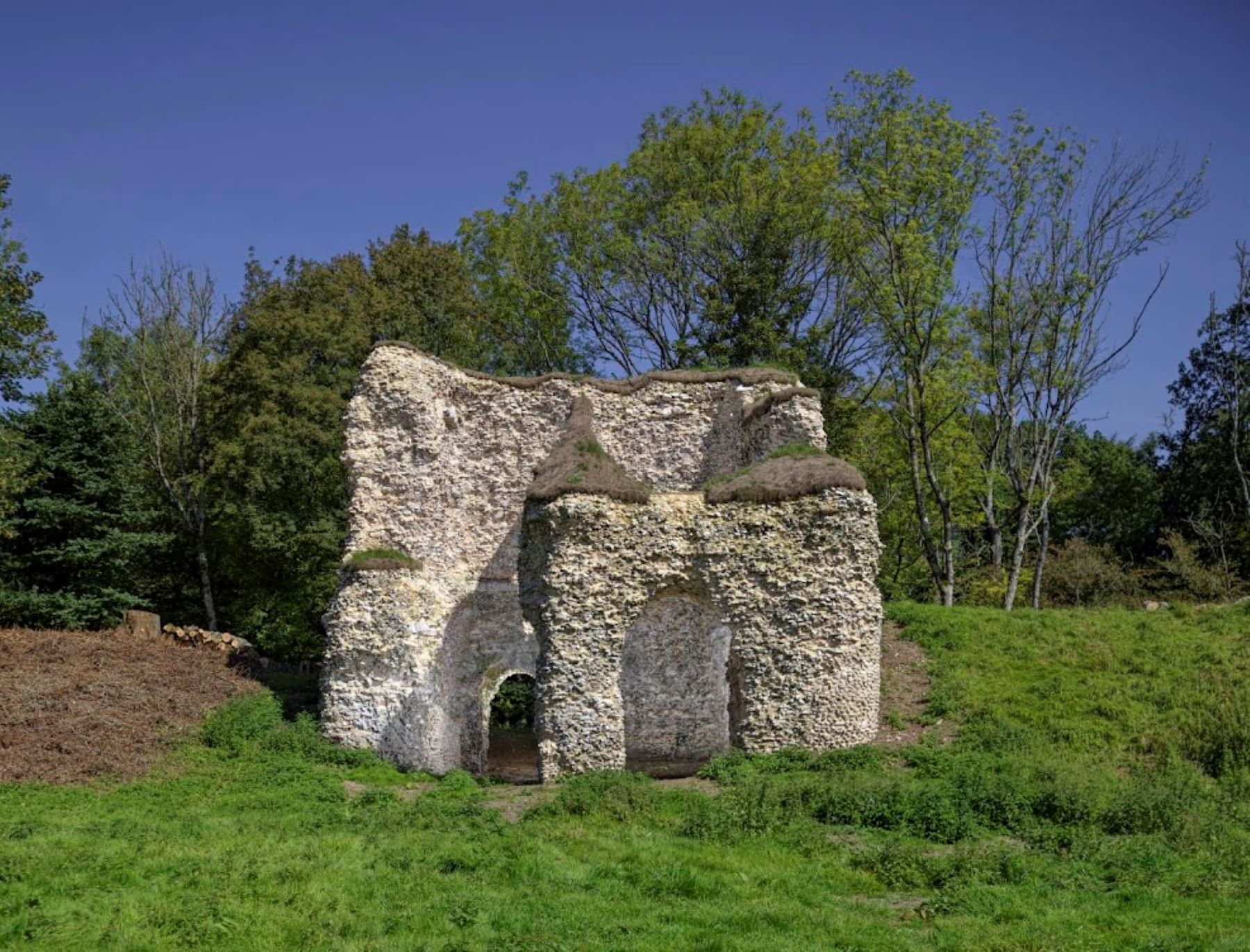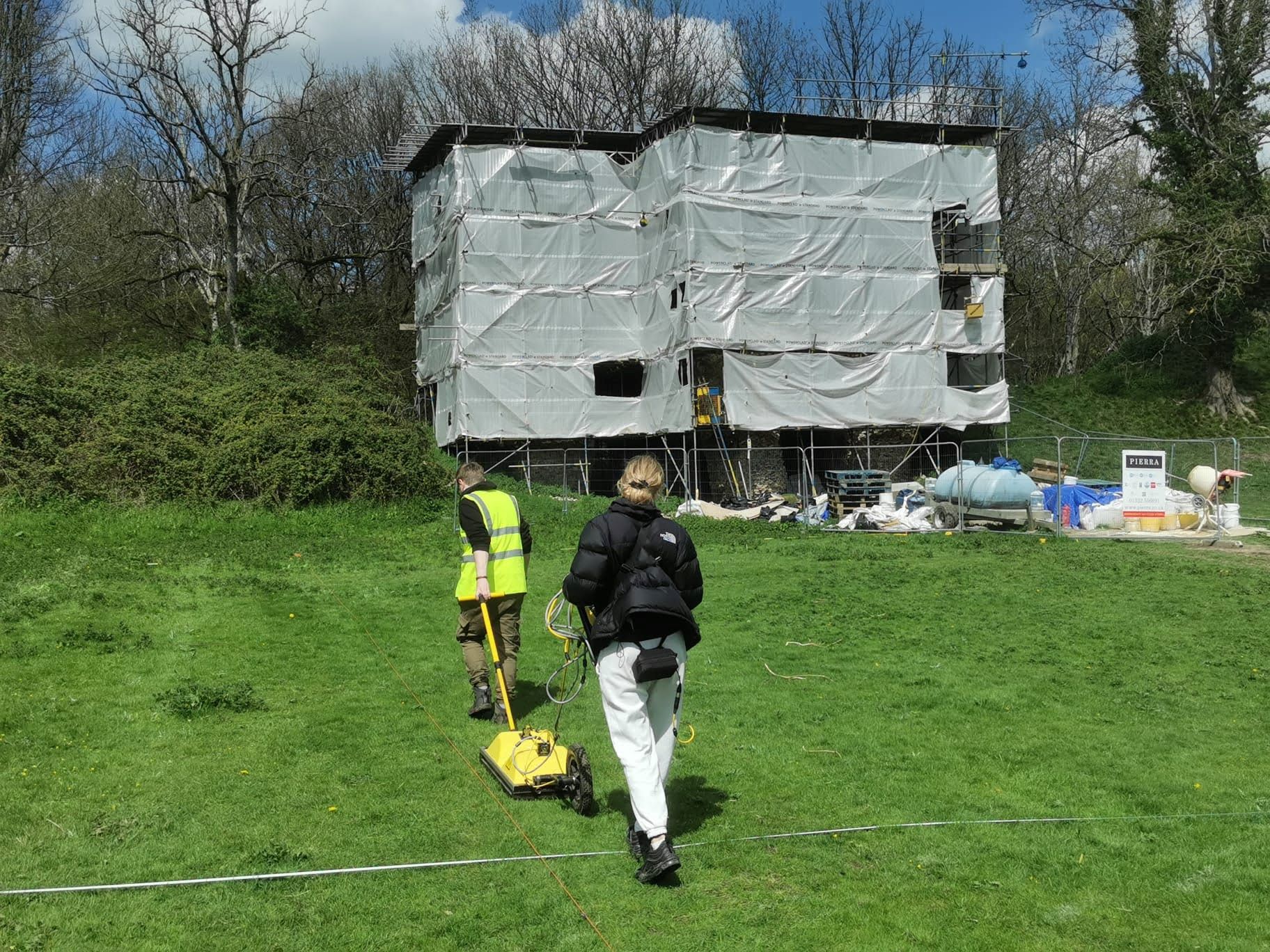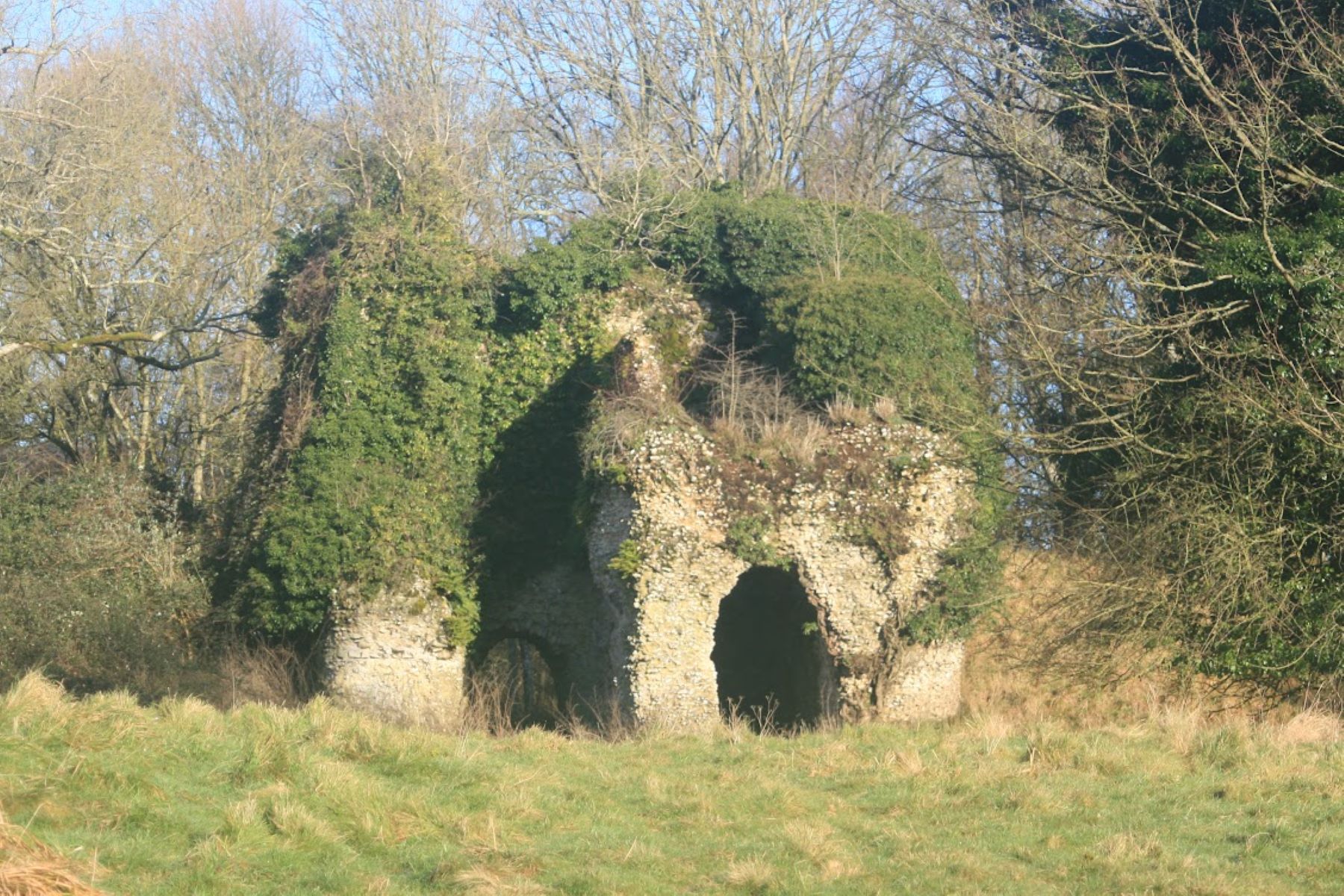
Students at the University of Winchester have been granted almost exclusive access to a scheduled monument thanks to a partnership with Historic England.
The collaboration focuses on Merdon Castle, near Hursley, provides an amazing learning facility for students and in return the heritage organisation benefits from the young people’s research.
Already the first cohort of archaeology and geography undergraduates have been able to practice their survey skills at the castle using ground penetrating radar, magnetometers (gradiometers to be precise) and resistivity meters.
The site, which is not open to the public, is important as it contains the remains of a Norman castle built on top of a Late Broze Age or Early Iron Age hillfort.
In addition to learning how to use the various types of survey equipment and to analyse the data it produces; students must also learn how to carry out their work without damaging or disturbing the sensitive site.
 Students surveying the site using ground penetrating radar
Students surveying the site using ground penetrating radar
Dr Monika Knul, Lecturer in Archaeological and Geographical Geomatics in the Department of Archaeology, Anthropology and Geography, said “This is a great place for students to participate in real world research programmes as they would in their professional life.”
Monika said that the castle could provide a fund of dissertation topics for Archaeology and Geography students as well as scope for archival research for those studying History.
“We are very grateful to Historic England for providing this training opportunity so close to Winchester which feeds into so many subjects,” added Monika.
Work to secure the remains of the castle was recently completed thanks to £240,700 grants from Historic England. The landowner provided additional funding.
The work included adding a protective layer of earth and grass to the tops of ruined walls to stabilise the structure and capping and consolidating a 400ft deep ‘bottomless’ well.
These improvements have stabilised the structure so it can be removed from the Heritage at Risk Register.
Elspeth Faulkner, Historic England Architect, said: “Merdon Castle has spent many years on the Heritage at Risk Register and it was critical that a programme of repairs was undertaken now to avoid further loss. A new partnership with the University of Winchester holds exciting possibilities for discovering more about this historic site while helping students develop important skills.”
 Merdon Castle before the restoration work
Merdon Castle before the restoration work
About Merdon
It is believed Merdon Castle was built between 1129 and 1138 by Henry de Blois, Bishop of Winchester, during the reign of his brother, Stephen, the last Norman king of England. The castle was partly demolished in 1155 on the accession of Henry II but was used as a bishop's palace until at least the 14th century. The medieval castle was constructed within the ramparts of a hillfort which probably dates to the Late Bronze Age or Early Iron Age (8th to 5th centuries BC).
Back to media centre